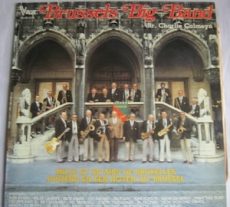
Daily Dose Of Jazz…
Alphonse “Al” Goyens was born October 1, 1920 in Wetteren, Belgium. He took piano lessons as a child but abandoned them at the age of twelve. In 1936, he bought a trumpet and began playing music again, teaching himself and playing with amateur bands. Completing a degree in industrial engineering, he was interned in Germany at the outbreak of the war and had to stop playing. Starting again he played too intensely, which paralyzed his lips, but overcame this situation through careful practice.
His return from captivity saw him a member of orchestras led by Henri Van Bemst and Jean Omer, making his first recordings with the latter. He then joined the orchestra of Léo Souris who played for the American army in Germany. Returning to Belgium, Al joined other musicians to form the Orchestre régulier du Cosmopolite , which gave him the opportunity to perform with major names of the jazz scene who were guests in Brussels.
In 1949 he and his orchestra again toured for the US Army, performing in Germany, the Azores, and the USA. Goyens led his orchestra for nearly a decade from 1949 featuring Jacques Pelzer, Bobby Jaspar, Francy Boland, Jean Warland, Freddy Rottier, and occasionally Don Byas and Kenny Clarke.
Once again he went on to work for the US Armed Forces and later with an international orchestra in Spain and the United States. Al later arranged and played in the Brussels Big Band. His favorite trumpeters were Clifford Brown, Dizzy Gillespie, and Clark Terry but his playing was more reminiscent of Harry Edison.
Trumpeter, arranger and orchestra leader Al Goyen played flugelhorn, and bugle, who never recorded as a leader, appreciated the sound of the muted trumpet, died on January 30/31, 2008 in Forest/Vorst, Belgium.
More Posts: arranger,bandleader,bugle,flugelhorn,history,instrumental,jazz,music,trumpet
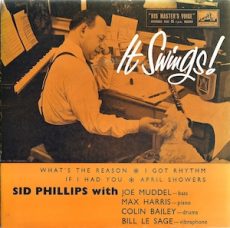
Daily Dose Of Jazz…
Joseph C Mudele was born on September 30, 1920 and grew up in Downham, South East London. He left school at the age of 14 and began singing and playing in local bands. He began playing double bass at the age of 17 after buying an upright bass in a junk shop. After having served in the war in the Royal Air Force, he studied for a while with principal double bassist James Merritt with the Philharmonia Orchestra.
His professional playing career took off in 1947 with clarinetist Carl Barriteau, accordionist Tito Burns and the Jimmy Macaffer Band. He toured with Hoagy Carmichael during the autumn of 1948, and played with Charlie Parker and drummer Max Roach at the 1949 International Jazz Festival in Paris.
In 1948 Mudele became a founder member of Club Eleven, a Soho nightclub open between 1948 and 1950 which played a significant role in the emergence of the bebop jazz movement in Britain. After the club was closed he became a founder member of the John Dankworth Seven, while also continuing to play with others during the Fifties. During this period Mudele also played for Sophie Tucker, Judy Garland and Billy Eckstine.
Joe supplemented his club performances with extensive radio, television and recording studio work outside of jazz from the 1960s onwards. In later life Mudele lived in Bromley, played weekly at the Bexley Jazz Club in Kent, and took over management duties after owner Les Simons died in 2004. In 2010 he recorded For All We Know with pianist Robin Aspland and drummer Geoff Gascoyne.
Double bassist Joe Mudele, who was sometimes known as Joe Muddel or Muddell and was one of the Club Eleven Collective, died at age 93 on March 7, 2014.
More Posts: bandleader,bass,history,instrumental,jazz,music
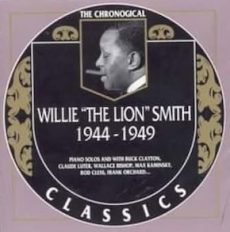
Daily Dose Of Jazz…
Frank Orchard was born on September 21, 1914 in Chicago, Illinois. He studied at Juilliard from 1932-33 and performed for a year with Stanley Melba’s band, but then worked outside of music altogether, mostly as a salesman until 1941.
Orchard became a part of the New York Dixieland scene in the 1940s, working with Jimmy McPartland, Jimmy Dorsey, Louis Armstrong, Bobby Hackett, Max Kaminsky, Wingy Manone, Joe Marsala and the Eddie Condon gang.
The mid-1950s saw Frank’s move to Dayton, Ohio and eventually to St. Louis, Missouri and still playing trombone although out of the spotlight. He never led his own record date and returned to New York in the 1960s. He worked regularly at Jimmy Ryan’s from 1970-71 and with Billy Butterfield in 1979.
Trombonist, violinist, banjoist and tubist Frank Orchard, who also played in the Willie “The Lion” Smith band with Jack Lesberg, Mac McGrath, Max Kaminsky, Rod Cless, died December 27, 1983 in Manhattan, New York City, New York.
More Posts: banjo,history,instrumental,jazz,music,trombone,tuba,violin
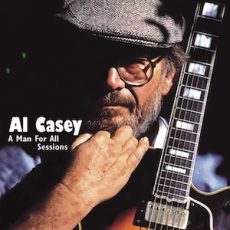
Daily Dose Of Jazz…
Albert Aloysius Casey was born September 15, 1915 in Louisville, Kentucky. He was a child prodigy who first played violin, then switched to ukulele. He began playing guitar in 1930 and attended DeWitt Clinton High School in New York City where he studied guitar. He met Fats Waller in 1933 and the following year, at eighteen, he became a member of Waller’s band.
Making several recordings with the band, he is known for having played the solo in Buck Jumpin’. After Waller’s death in 1943, he led his own trio and for two consecutive years in the 1940s, he was voted best guitarist in Esquire magazine.
From 1957, he was a member of a rhythm and blues band led by King Curtis. Four years later he dropped out of music, though he returned in the 1970s to record with Helen Humes and Jay McShann. Another absence followed until 1981, when he returned to music to play with the Harlem Blues and Jazz Band.
During his career, Casey worked with Louis Armstrong, Chu Berry, Coleman Hawkins, Lionel Hampton, Billie Holiday, Billy Kyle, Frankie Newton, Clarence Profit, Art Tatum, and Teddy Wilson.
Guitarist Albert Casey died of colon cancer on September 11, 2005, four days shy of his 80th birthday.
More Posts: bandleader,guitar,history,instrumental,jazz,music
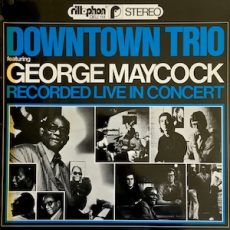
Daily Dose Of Jazz…
George Maycock was born on September 9, 1917 in Colón, Panama. He played in Panama with his band Chimbombo Swingjazz since 1940. With the dance and show music of Cuban Jaime Camino, he and his band came to Spain in 1949.
Together with the trumpeter Boogie Sergeant and drummer Big Fletchit, who played at Camino and stayed in Europe, they became the Chic Combo with the Jamaican bassist Noel George Gillespie. They operated from Basel, Switzerland then from Cologne, Germany to go on tour. On occasion saxophonist Jack Poll played with the quartet, before Wilton Gaynair joined in 1956, creating the George Maycock Quintet.
This band played modern jazz and continued to perform regionally and was rated the best black combo in this country by the 1980 Rheinische Post 1980. Later, Maycock moved to Düsseldorf, Germany where he was in the center of the local jazz scene. In the 1960s he had increasingly begun playing in dance bands. During the Seventies he toured with Fletchit and Ali Haurand in the trio and played with Jörn Behrens and Ralph Kleine-Tebbe in the Düsseldorf area.
Pianist George Maycock, who was one of the first Black musicians to perform authentic jazz in Central Europe after the Second World War, not on concert tours, but through intimate performances in jazz clubs, died on August 20, 1979 in New York City, New York.
More Posts: bandleader,history,instrumental,jazz,music,piano



